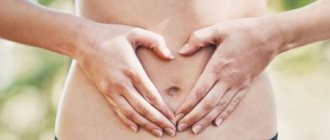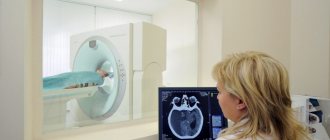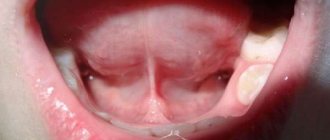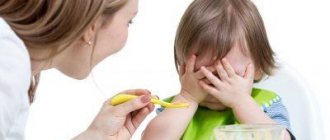Updated: 02/18/2020 12:26:31
Expert: Boris Kaganovich
*Review of the best according to the editors of expertology.ru. About the selection criteria. This material is subjective in nature, does not constitute advertising and does not serve as a purchase guide. Before purchasing, consultation with a specialist is required.
Dehydration, or exicosis, is quite common in the clinic of infectious diseases, and especially when it comes to acute intestinal infections in children and the elderly. Middle-aged people are less susceptible to dehydration due to well-developed compensatory mechanisms for maintaining fluid. But even if an adult, healthy and strong person encounters, for example, cholera, then within two days, having lost over 10% of his body weight, he can die very quickly. Dehydration reaches such a degree that the blood begins to clot in the vessels, generalized thrombosis occurs, peripheral veins become empty and collapse, capillary blood flow practically stops, body temperature drops, and irreversible multiple organ failure occurs. And the cholera vibrio does not have any deadly poisons or toxins: all it can do is “pull out” all the water from a person so that the multiplied vibrios spread over the largest possible area.
It would seem that it is simpler: the best remedy for dehydration is water. Unfortunately, this is not entirely true. Together with water, a person loses a large amount of electrolytes and mineral salts. If you only replenish the loss of water, without caring about the ionic composition, then nothing good will come of it. Serious shifts in the concentrations of sodium, potassium, magnesium, and bicarbonate will occur, which will lead to decompensated electrolyte imbalances. Let's consider how water reserves are distributed in the human body. After this, the mechanisms of development of dehydration and its causes will become clearer.
Water in the human body
Once upon a time, several hundred million years ago, we all (more precisely, our ancestors) lived in water, and when they came to land, they took with them part of the external, oceanic environment in the form of water. It is a universal solvent, and all chemical reactions that maintain homeostasis, or the constancy of the internal environment, occur in it.
In a healthy adult, water makes up almost 60% of body weight, the rest is dry matter. Whose body contains more water, men or women? Men have more water in their bodies because they have more muscle tissue, while women tend to have more fatty tissue. But fat contains less water than muscle, it is hydrophobic, and repels water. Women have an average of 53% water in their bodies, while men have about 60%.
The bodies of babies, and especially newborns, which consist of almost 70% water, contain significantly more water. The older a person is, the less water there is in the tissues of his body. This phenomenon is reflected in age-related pathology, for example, in osteochondrosis, in which intervertebral cartilaginous discs gradually decrease in volume, lose their elasticity, dry out, and cause certain symptoms - back pain and limited range of motion.
The absolute amount of water in the body of a person who weighs about 70 kg is quite impressive: more than 42 liters of water. This is the volume of a fairly large and roomy aquarium, in which even not very small fish will feel comfortable. Of this volume, about 28 L is in the form of intracellular fluid, and interstitial, or intercellular and tissue fluid, will be a volume of approximately 10.5 L, including lymph. The total volume of blood is usually 8% of the total water in the body, and for a person, about 3.5 liters of blood is “enough”.
Naturally, a person receives water only orally, that is, through the mouth, by drinking water and consuming liquids contained in food. A person is able to absorb a certain amount of liquid through the skin, but this volume is so insignificant that it is of only theoretical interest. So, after being in a bathhouse or sauna, plunging into a cool pool, a person can absorb about 10 ml of water over the entire area of his skin.
Loss of excess fluid mainly occurs through the kidneys. Water is also lost due to the work of the sweat glands, evaporating through the surface of the skin, and with the lungs, during exhalation. In a healthy person, all “planned losses” of water are strictly compensated by its consumption, the water balance is in equilibrium.
The usual amount of water needed by an adult who is not in a hot climate and is not engaged in heavy physical labor is about 2 liters of liquid daily. If the ambient temperature rises or the level of physical activity increases, then the amount of water lost through the skin and lungs can double.
In a healthy adult, about 7-8 liters of fluid are secreted into the intestines every day. Where does it come from? After all, we only get 2 liters from food. Yes it is. Two liters of water comes from food, but:
- approximately the same amount or even more, about 2.5 liters is accounted for by gastric juice;
- 1 liter of water is contained in the daily volume of saliva;
- 1.5 l is intestinal juice;
- finally, 0.5 l is bile.
Everyone can make sure that such a volume of fluid is not excreted by the intestines. This is true, 75% of the liquid is absorbed back in the small intestine and 25% in the large intestine, and only about 200 milliliters, or even less, is excreted in the feces per day. Thus, the body is very economical in water consumption.
It follows that if you start the fight against dehydration when it has not yet gone too far, then it is easy to compensate for excess fluid loss at the very beginning. But if the patient is already in a state of deep dehydration, then oral fluid intake is no longer sufficient. Oral rehydration may be interfered with by impaired consciousness, fainting, or severe vomiting. In this case, intravenous rehydration is necessary, which will be discussed briefly at the end of the article.
Prevention of dehydration
To avoid large losses of fluid, you need to follow a drinking regime. You need to drink often, but in small portions. Large volumes of liquid provoke vomiting in case of poisoning or intestinal infection. It is best to drink warm still water. Children are given water from a teaspoon every 5-10 minutes. Water is poured into the baby's cheek from a syringe without a needle.
It is not advisable to drink immediately after eating, because... With diarrhea, the process of digesting food is disrupted. The liquid dilutes the gastric juice, which makes the situation worse. The interval between food and liquid intake should be at least 20 minutes.
Saline solutions - Regidron, Gidrovit, Oralit - will help prevent dehydration during watery diarrhea. Such products are produced in the form of a powder for dilution. Regidron intake is alternated with drinking clean water.
To remove toxic substances from the gastrointestinal tract, you can use absorbents - activated carbon or Smecta. They absorb harmful compounds and remove them from the body. Sorbents and saline solutions are different preparations. For diarrhea with water and its other manifestations, they are used as a combined treatment and prevention of dehydration.
The daily water requirement for an adult is 1.5-2 liters per day. A child's need for water is 250 ml per 5 kg of weight. In case of intestinal disorder, the volume of incoming fluid is increased.
Causes of dehydration
When does dehydration develop? When water consumption cannot compensate for losses, or is absent altogether (for example, children and infants themselves cannot take measures to search for water, like adults). Children and the elderly are most often susceptible to dehydration. Babies quickly lose water because their compensation mechanisms are not yet perfect, and in older people, the thirst center located in the brain does not function well enough, and therefore many older people simply do not understand that they are thirsty.
In fact, dehydration, albeit to a mild degree, is very familiar to all of us, and we experience it regularly. Mild dehydration occurs every morning after we wake up. After all, we spend a third of our lives sleeping, and sometimes more, and if a person doesn’t wake up at night, then he doesn’t drink. At the same time, all systems of our body continue to work at night, but fluid does not flow. That is why in the morning the blood is thicker, more pressure is required to transport oxygen and carry out capillary gas exchange, and the heart begins to work harder. This is why cardiovascular disasters often occur in the early morning hours, such as heart attacks, strokes, fatal arrhythmias, and other severe disturbances in the functioning of the body associated with hemoconcentration and arterial hypertension.
That is why immediately after waking up it is very good to drink a glass or two of pure water, maybe with lemon juice. This simple way to replenish the volume of circulating fluid is also good for hypertensive patients, and after this the blood pressure decreases slightly.
What are the main causes of fluid deficiency in the human body? Here they are:
- The most severe loss of fluid, leading to hypovolemic shock, occurs with intestinal infections. This is a loss with profuse, innumerable, watery diarrhea or diarrhea, with vomiting due to gastroenteritis;
- Excessive sweating, especially in hot and dry climates due to increased physical activity. It should be noted that with the onset of significant dehydration, fluid loss through sweat decreases and the amount of urine excreted decreases;
- Extensive burns lead to fluid (and protein) deficiency;
- loss of a large amount of water is possible by the kidneys with diabetes mellitus (insulin-dependent) and diabetes insipidus, Addison's disease, and other endocrine disorders;
- brain tumors affecting the thirst center, loss of the sense of water deficiency (rare);
- chronic renal failure - if the kidneys cannot concentrate urine, then they have to significantly increase the volume of urine, this condition is called isohyposthenuria;
- overdose of diuretics, especially rough and strong ones - furosemide, torsemide.
Mild forms of dehydration quite often occur against the background of active sports, and especially during the hot season. Dehydration increases sharply as body temperature rises. Therefore, a person, even if he is not experiencing physical activity and is at rest, during colds and flu should drink as much fluid as possible, but not only for the purpose of detoxification and removal of microbial or viral toxins, but also to prevent dehydration.
Complications
It is easier to prevent dehydration from diarrhea than to treat its possible consequences:
- Convulsive activity.
- Immune suppression.
- Development of heart diseases and pathologies of the vascular system.
- Impaired intestinal motility.
- Chronic form of renal failure.
- Impaired functioning of the respiratory organs.
- Gynecological pathologies.
- Coma.
When dehydrated, the functioning of the circulatory system is disrupted. Due to insufficient blood supply, vascular walls lose their elasticity, which subsequently leads to atherosclerotic changes and obesity.
It is extremely important for women during pregnancy at any stage of gestation to monitor their health and prevent the development of dehydration. Loss of fluid volumes in the body is dangerous not only for the mother, but also for the unborn child. He may experience oxygen starvation, which negatively affects the development of the nervous system and other organs.
Digestive upset of any origin should not be ignored and dehydration should not be allowed to occur. The patient’s task is to promptly normalize the water-salt balance and stop diarrhea. To do this, he must consult a doctor and follow all his instructions.
Normally, each person produces 200–300 grams of feces every day. When they acquire a liquid consistency and bowel movements occur more than three times a day, the condition is called diarrhea. If such a problem occurs rarely, is not of high intensity and is short-term, the situation does not pose a serious danger. However, it is dangerous when a person develops prolonged watery diarrhea. How to protect yourself from dehydration due to diarrhea? What will help if the condition has already occurred?
Be careful, kids!
It was said above that young children and the elderly are at risk for dehydration. And if older people can still come into contact with a doctor, answer questions, and this makes it possible to collect an anamnesis and understand what happened to them, then with babies, especially infants, such verbal contact is impossible.
What are the vulnerabilities of babies, why are they more susceptible to the rapid development of dehydration? First of all:
- Children are much more likely than adults to suffer from infectious diseases that cause fever, diarrhea and vomiting. But in young children, fluid deficiency can occur not only with an intestinal infection, but even with colds and respiratory diseases, with bronchitis and pneumonia, and even with urinary tract infections, for example, against the background of exacerbation of pyelonephritis;
- the greater the volume of fluid in the body, the faster it is lost, since it can leave the body more easily: it is not so tightly bound to the tissues;
- it should be remembered that if the volume of the body is small, then the ratio between the area of the body and its mass increases, which means that the child loses water through the skin and mucous membranes through evaporation more than an adult;
- It has already been said that compensatory organisms for maintaining moisture in babies are not developed. A small child cannot, like an adult, increase the concentration of urine, since the kidney tissue is not yet fully mature;
- When thirst sets in, babies cannot drink or ask for water on their own, and are completely dependent on those around them. Therefore, parents, especially young ones, need to monitor their babies very carefully, especially in hot weather, and see if they show signs of impending fluid deficiency.
What characteristic symptoms of dehydration can be noted in adults and children?
First aid
If there are signs of dehydration in children or the elderly, be sure to call an ambulance. Before the doctor arrives, the patient is given a warm drink. Boiled water or a glucose-saline solution is best. Other drinks can be harmful. Salt retains fluid in the body, so electrolyte solutions help with dehydration due to diarrhea. Glucose in their composition helps transport potassium and sodium ions into cells.
Diagnostics
To determine the degree of exicosis, the doctor prescribes a blood and urine test. The results of the study also allow you to check the concentration of electrolytes. Diagnosis is usually carried out in a hospital setting. In addition to the tests, they evaluate: the patient’s weight and compare it with indicators preceding dehydration, determine the time of capillary refilling, and the respiratory rate.
Mild dehydration can be treated at home. Treatment methods may vary depending on age.
Signs of water deficiency: symptoms of dehydration
What is the main symptom of dehydration? Any person will answer this directly: it is thirst. This is true, but only for the initial and middle stages of fluid deficiency, and for a middle-aged adult. Only in middle-aged people do all the interneuron connections that control the thirst center located in the brain work well. In addition to the expressed desire to drink, which can be painful and unbearable, symptoms of dehydration can be considered:
- low sweating, and the production of a small amount of concentrated, dense and darkish urine containing a large amount of salts. But, unlike thirst, low sweating may be unnoticeable to the patient himself, just like a small amount of urine. Only by going to the toilet can you be convinced of this, and only by paying attention. And when you don’t want to go to the toilet, you somehow don’t pay attention;
- but a symptom such as dry mouth, lack of saliva, or a condition where the saliva is viscous, white and foamy is difficult to miss;
- if dehydration progresses, then reduced skin turgor and wrinkles appear, which, when folded, do not straighten out, or straighten out very slowly;
- general health worsens;
- cyanosis appears at the tip of the nose, lips, ears, fingers, due to a slowdown in capillary blood flow;
- blood pressure drops. After all, it is impossible to maintain hydrostatic pressure in the system if there is no liquid. No amount of increased vascular tone and increased work of the heart can preserve it if there is no working fluid in the hydraulic system - water. The patient initially develops signs of orthostatic hypotension, when dizziness and lightheadedness appear when suddenly rising to a vertical position;
- later confusion, drowsiness, and shock occur;
- with extremely rapidly developing extreme dehydration (about 12% of body weight), the blood thickens in the vessels, the veins collapse, microcirculation is disrupted, and body temperature rapidly drops. Thrombosis develops, and the person dies due to hypovolemic shock.
Infants and toddlers have special symptoms of severe dehydration that do not occur in adults. This:
- progressive pallor;
- rapidly developing retraction of the eyeballs; when pressing on them, their softness is felt;
- the appearance of dark circles under the eyes;
- in infants, in addition to sunken eyes, sunken fontanelles can also be detected upon palpation, that is, unhealed sutures between the bones of the skull filled with temporary cartilaginous tissue;
- The crying of such a baby is dry, without tears, since there is also not enough tear fluid;
- The vocal cords, which can produce a loud cry in a child, must have turgor and be elastic. If dehydration progresses, the vocal cords become flabby and dry out, and crying becomes hoarse and quiet, with virtually no screaming.
These symptoms are quite enough to make a diagnosis and begin urgent fluid replacement, since the baby will not complain to you about thirst or lack of urination. Naturally, in children with severe and even moderate dehydration, it is useless to administer fluids through the mouth; massive intravenous rehydration therapy is necessary.
Preventive measures
Of course, prevention is better than cure. If a good diet is a habit in a person’s life, it will help avoid the development of diarrhea, and even more so, dehydration.
The diet includes foods enriched with vitamins and minerals. It is important to ensure that there is a good balance between proteins, fats and carbohydrates. It is important to eat only fresh and well-prepared food. It's better to refuse:
For digestive problems, the diet includes:
If diarrhea occurs, from the very first hours of the condition, you need to drink a sufficient amount of water and, if necessary, special solutions.
If you are attentive to your health and pay attention to alarming symptoms, you can notice the problem in a timely manner and begin treatment. This is how you can keep your life and health in order.
The information on our website is provided by qualified doctors and is for informational purposes only. Don't self-medicate! Be sure to consult a specialist!
Gastroenterologist, endoscopist. Doctor of Science, highest category. Work experience 27 years.
Professional skills: Colon hydrotherapy, treatment of gastrointestinal diseases
Normal human life is ensured by the presence of water and electrolyte balance. But there are many factors that violate it: diarrhea syndrome, frequent vomiting, increased body temperature, increased sweating, thirst. Dehydration during diarrhea occurs due to the body's desire to get rid of toxic elements that accumulate during digestive disorders.
This problem is especially dangerous for children and older people. Therefore, it is important to start treatment measures on time and prevent the development of complications.
How to diagnose dehydration using blood tests?
If dehydration has reached a severe degree, then blood, especially from the peripheral ulnar vein, cannot be obtained for analysis. The vein collapses due to the lack of fluid, and the needle does not penetrate into the lumen of the vein, but pierces it through, since there is simply no lumen: after all, in soft veins it is created by blood pressure. Therefore, the first laboratory sign of severe exicosis is the inability to obtain blood from a peripheral vein.
If there is still blood, it flows with difficulty, since the hematocrit is very high - the ratio between liquid plasma and blood cells. That is, there are much more formed elements than liquids or plasma. This phenomenon is relative, and if there were the required amount of fluid in the blood, then all cellular elements would be observed in normal concentrations, distributed in a larger volume. And with dehydration, relative erythrocytosis, leukocytosis, and thrombocytosis can be noted.
In a biochemical analysis, the first thing that is noticeable is an increase in sodium in the blood plasma, and if there is severe repeated vomiting, then chlorine is also lost with it. The patient develops acidosis and the plasma bicarbonate concentration decreases. If dehydration is severe and acidosis progresses, then an increase in ketone bodies and lactic acid is noted as markers of decreased tissue perfusion.
Preventive measures
Diarrhea is the main cause of dehydration. To prevent eating disorders, it is necessary to eat fresh, high-quality foods enriched with useful elements. It is advisable not to eat fatty, smoked, fried, salty, spicy foods, but to include boiled, baked, steamed vegetables, red and white meat, and fish in your diet.
If diarrhea does occur, the best way to prevent dehydration is to drink plenty of fluids. The patient should drink enough fluids throughout the day, even if he is not thirsty. The volume of water consumed can include low-fat broths, rice water, and vegetable soups.
Important! Drinking caffeine-containing drinks if you are showing signs of dehydration is strictly prohibited. They have diuretic properties and can aggravate the patient's condition.
Replenishing water supplies
It was said above that it is necessary to replenish not only fluid reserves, but also lost electrolytes. All methods of rehydration, that is, fluid replenishment, can be divided into oral and infusion (intravenous).
Oral rehydration, which requires drinking very often and in small sips, is possible in the early stages of dehydration, as well as in the absence of vomiting. If there is severe vomiting and diarrhea, then hospitalization and rehydration through intravenous infusions are necessary. If attacks of vomiting are rare, then it is also possible to replenish fluid reserves orally if you drink in frequent sips approximately every 10 minutes.
If there is no vomiting, but there is diarrhea, then you can give more liquid and less often, after each bowel movement approximately in the volume of lost liquid plus 10-20% of the approximate volume of watery stool. If we are talking about infants, then usually a solution to replenish fluid loss should be given at a rate of at least 100 ml per kilogram of the child’s weight, but no more than 160 ml. Therefore, if we are talking about ongoing diarrhea in a child, for example, weighing 9 kg, then he should drink from 900 ml to one and a half liters of liquid per day, provided that the diarrhea does not stop.
In general, a baby with mild dehydration will not be very willing to drink a salty oral rehydration solution. Therefore, if fluid replenishment is started early, then the child will be very happy to drink light chicken broth, mineral water that is not very salty, or even juice, but always diluted with water. But if dehydration continues, then compensation for the loss of salts is no longer possible.
In adults, naturally, there is less fluid in the body, therefore, in the presence of a mild degree of dehydration, an amount of fluid of no more than 50 ml per kilogram of body weight is quite sufficient, and about 80 ml per kilogram of body weight in case of a moderate degree of dehydration, when there is already a decrease in blood pressure and a deterioration in general health. well-being. It is advisable to drink the solution frequently, every 15 minutes, but in case of nausea - no more than 100-150 ml. Accordingly, you need to consume a liter or one and a half within an hour.
What solutions are created specifically to replenish fluids and salts, and are sold in pharmacies?
Principles of treatment
What if dehydration has already developed and requires treatment? In cases where signs show that dehydration is mild, take measures independently. If the condition reaches a critical state, first aid is provided, but going to a medical facility is mandatory, since a person’s life is in danger.
What to drink to improve the well-being of a patient with dehydration? The following drugs will help:
All these drugs are powders that must be diluted in water. These medications are taken up to 6 times a day. If a person’s condition is accompanied by severe vomiting, the formulations should be taken one teaspoon at an interval of several minutes.
If signs of dehydration are observed in an infant, it is necessary to go to the hospital, but stopping breastfeeding is prohibited.
To eliminate exicosis, traditional medicine will also be effective. The following describes how to prepare several home remedies.
For a homemade rehydration mixture, you will need ½ teaspoon of salt and 5 tablespoons of sugar. This is poured with a liter of warm water and stirred. The composition should be taken in small portions until the negative symptoms completely disappear.
With diarrhea, not only fluid is lost, but also microelements. An excellent restorative remedy is water with lemon. Place several lemon slices in a glass and crush them. Add a spoonful of honey and pepper on the tip of a knife. This remedy not only helps restore water balance, but also stops diarrhea.
Oral rehydration solutions
This section will not consider drugs packaged in 200-400 ml glass bottles or plastic bags. These are sterile solutions for intravenous administration. These are the drugs “Disol”, “Trisol”, “Lactasol”, “Acesol” and others. There is no point in buying them to take them internally. It is also strictly forbidden to replenish fluid deficiency with energy drinks, tonic water, carbonated sweet lemonades and fizzy drinks, sweet juices without prior dilution with water, Coca-Cola, and other liquids. They contain a lot of carbohydrates and carbon dioxide, and their osmotic concentration can increase fluid loss and only make you feel worse.
If there is no way to get to the pharmacy, then the simplest solution is one tablespoon of table salt and two tablespoons of sugar per liter of water. The solution will be even more effective if you add one teaspoon of baking soda. It is much better to take glucose instead of sugar, if you have it. Industrial solutions differ from homemade solutions by adding additional ingredients.
Historically, all solutions for replenishing fluid deficiency primarily, in addition to table salt, contained an energy substrate, glucose, so they had high osmolarity - more than 310 mOsmol. One of the first and main ones is the solution recommended by the World Health Organization, which is called the WHO solution.
This solution contains sodium chloride, potassium chloride and sodium bicarbonate, as well as glucose. The osmolarity of the solution was 331 mOsmol. This solution was used for a long time, and although it compensated for the deficiency of ions and fluid, the osmolarity was high, and the diarrhea did not stop. Moreover, diarrhea was then caused by the solution itself and acquired a hyperosmolar character, which, of course, is unacceptable.
It turned out that the WHO composition is good only in the case of cholera, since Vibrio cholerae specifically creates a high osmolarity of diarrheal fluid due to the massive release of salts and large loss of sodium. In cholera, the loss of sodium alone can reach up to 120 millimoles per liter of diarrheal fluid. In the modern world, with common intestinal infections, for example, with rotavirus infection in European countries, diarrhea is not so massive, and sodium is lost twice as slow, amounting to 55-60 millimoles per liter. Therefore, it was necessary to reduce the osmolarity of the solution, at least by several tens of units. Therefore, at present, Regidron, with reduced osmolarity, is considered one of the most famous, effective and popular solutions.
Regidron
Rating: 4.9
This bright yellow sachet contains sodium chloride, potassium chloride, sodium citrate and dextrose (D-glucose). Regidron's osmolarity ranges from 200 to 250 mOsmol per liter. The content between sodium and glucose in this powder is best for water absorption, and helps reduce the osmolarity load on the intestines. In addition, this solution has a milder taste, and the presence of sodium citrate improves energy metabolism, since citrate, or citric acid salt, is a substrate for the Krebs cycle, a universal cycle of tricarboxylic acids. It flows in almost every cell of the body and serves as a source of energy, being an essential element in the process of cellular respiration.
The medicine is used not only to restore water and electrolyte balance, but also acid-base balance. In addition to diarrhea, the product can also be used for intense sweating and vomiting, with the exception of persistent and debilitating cases when intravenous replenishment of fluid deficiency is necessary. The medicine should be dissolved in one liter of boiled cool water and given in the above proportions until dehydration is eliminated, diarrhea stops and water and electrolyte balance is restored.
Regidron is produced by Orion Corporation, Finland. Powder for oral solution, each package contains 18.9 g of powder, 20 packages in one package. The cost of packaging is from 340 to 400 rubles, about 20 rubles per package.
How does fluid loss affect the human body from the inside?
Before you can identify dehydration in a child or adult, you need to understand how it works inside the body. Liquid is found not only in all cells of the human body, but also outside them. The medium contains mineral salts: sodium and potassium (electrolytes), which are necessary for carrying out important body processes. When water is removed from cells and tissues, the amount of electrolytes decreases, and the cells literally “dry out.” All this leads to the failure of all working systems of the body and subsequently to serious diseases.
Contraindications
Despite the benefits and necessity of the procedure, oral rehydration requires consultation with a doctor. It is contraindicated for the following diseases and complications:
- insulin-dependent form of diabetes,
- hypertension,
- acute kidney dysfunction,
- cirrhosis of the liver,
- intestinal obstruction.
In such conditions, deterioration may occur, so you should entrust your health to a specialist. For heart diseases, rehydration is combined with taking special medications, and blood pressure is constantly monitored. Before use, you should read the instructions: some components can cause an allergic reaction.











